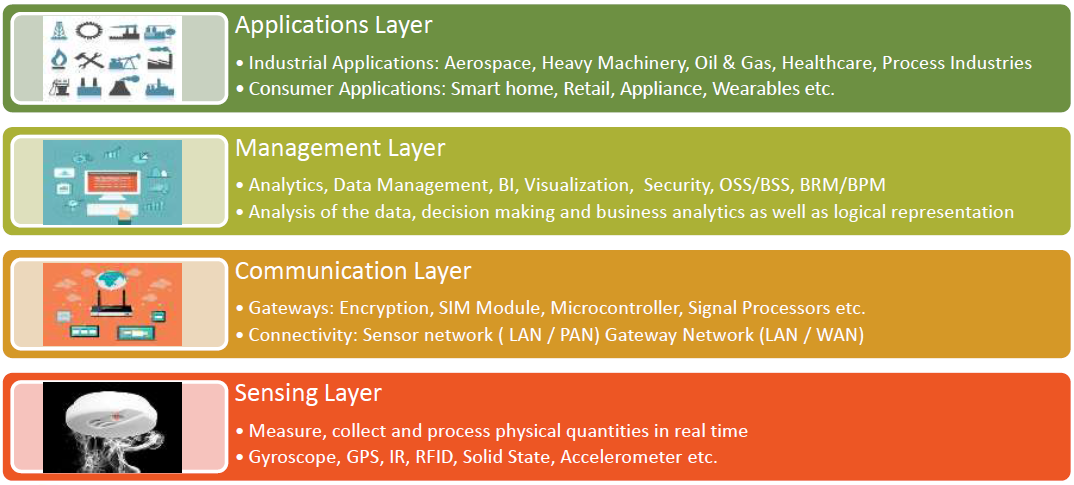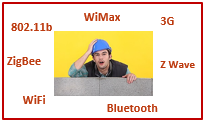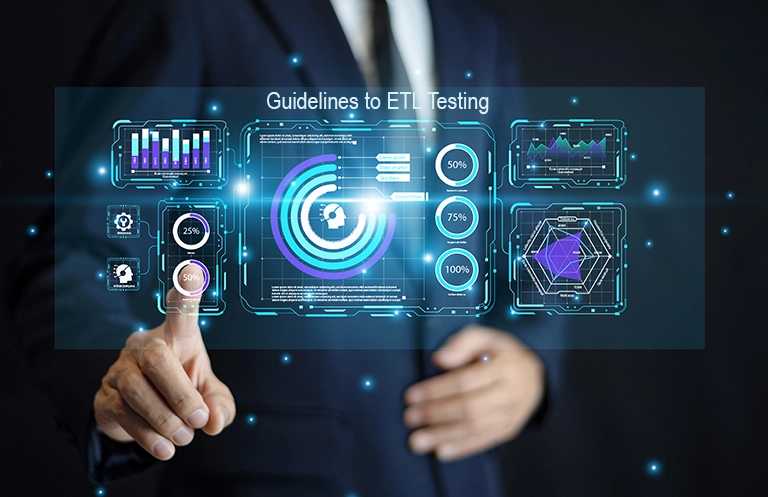I have discussed the need for standardization of IoT solutions in one of my previous blogs. Electronic design is always considered a critical aspect of any product’s success and the same is true for IoT solutions.
IoT implementation is weighed down by a number of challenges due to automation, data mining, sensor interoperability, analytics and improving customer experiences and interactions with the products. In this blog, I would like to discuss potential solutions to overcome the same. Before understanding the problems, let’s first have a quick look at the various layers of the IoT architecture:

Some of the most discussed topics in IoT are ‘M2M communication’, ‘smart components’, and ‘connected enterprise/industry’ that points aspects relating to connectivity or communication between various component layers.

For smart system deployments, we need sensor devices attached to various component layers. In fact, today, the trend is towards an exponentially increasing number of smart sensors deployed across industrial landscape. These are the sensors with an interfacing circuit enabling them to capture newer and more important data from the existing field devices, making sense out of them using in-built analytics to take corrective actions up to a certain degree. This generates volumes of data that demands communication across the server side on a need basis (when edge analytics do not suffice). This has an inherent challenge which is lack of common protocol for communication.
There are way too many IoT protocols today that don’t talk to each other posing a great barrier to IoT implementation.

Following are some numbers to ponder about:
- Process Automation: 38 Protocols
- Industrial Control Systems: 3 Protocols
- Building Automation: 19 Protocols
- Power System Automation: 4 Protocols
- Automotive / Vehicle: 12 Protocols
To pick off-the-shelf communication protocols, one really needs to carry out a critical trade-off between multiple factors, a few of which are depicted in the sketch below:

However the real nightmare is making these protocols talk to each other, specifically so while introducing IoT into your existing set-up.
There are two ways to deal with this situation. One, of course is having a common consortium for the communication standards and interoperability. However, this will cause the industry leaders to lose the unique advantage that they have through the proprietary protocols and hence this cannot be arrived at overnight!
The other is design of universal gateways. With the kind of numbers above, it is virtually impossible to have a ‘universal gateway‘ in a real sense. However, there are certain most widely used industry specific protocols which can be identified through some quick analysis. Having a scalable solution to cater to the respective industries’ requirements through gateway logic development for 2 or more protocols will serve the purpose.
eInfochips, having an expertise in sensor designing, sensors integration and communication protocols, have helped their customers overcome the above challenges. Especially, the universal gateway development and integration of smart sensors have been the highlights of the kind of value eInfochips have been adding to their client’s IoT initiatives.













